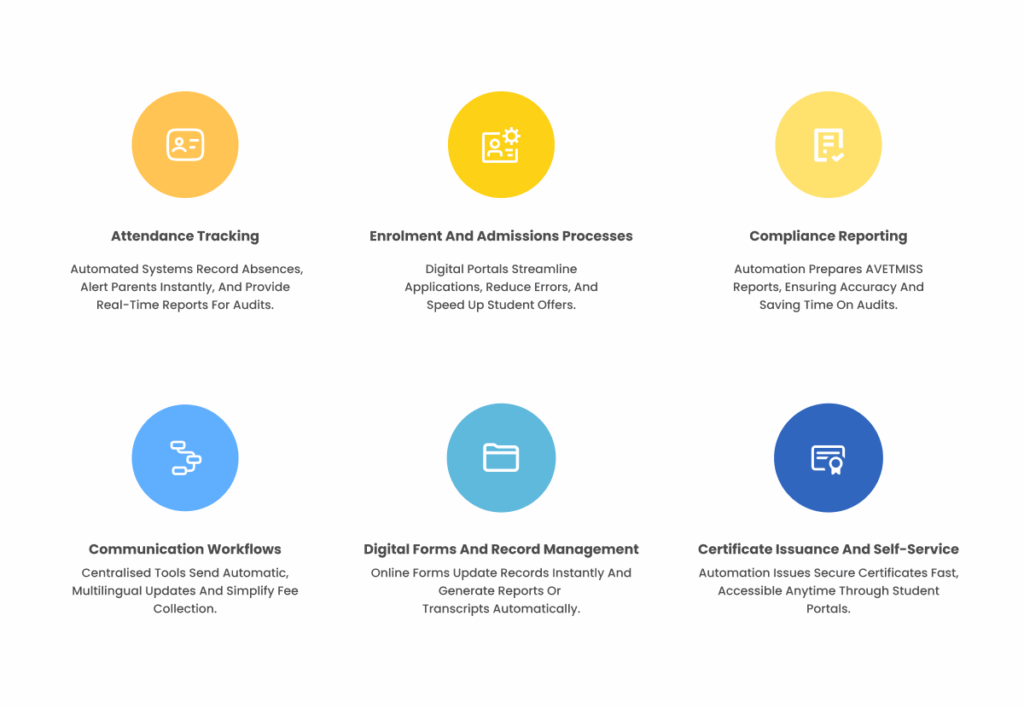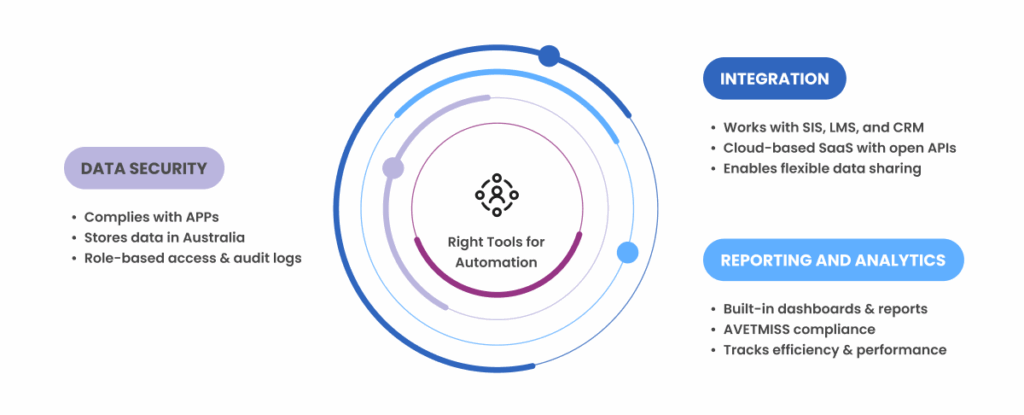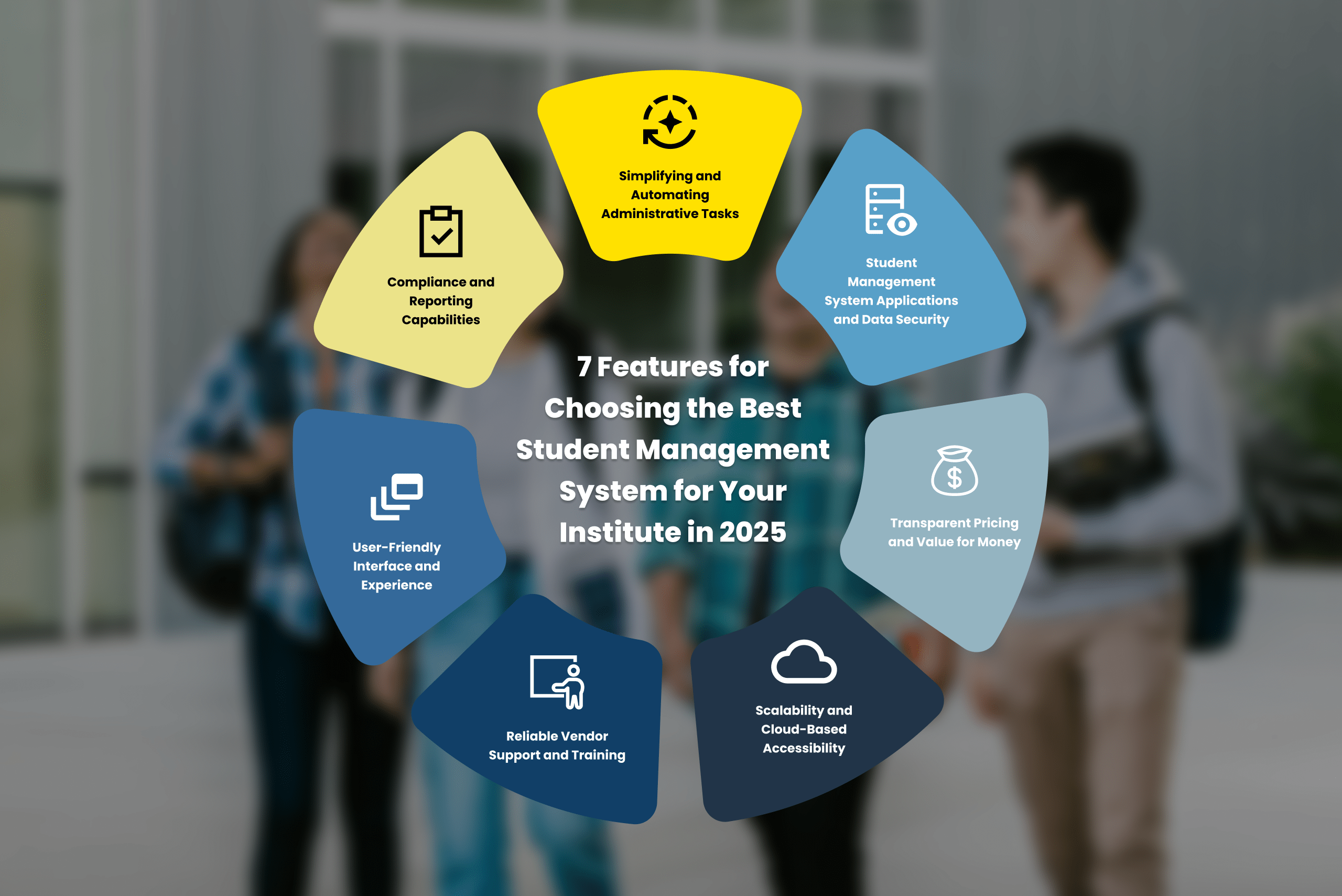Automation is now at the centre of the admissions process for educational institutions in Australia, such as universities, TAFEs, and private colleges. As of 2025, these institutions increasingly rely on automated workflow management to process applications faster, improve the applicant experience, and adapt more quickly to compliance requirements.
Student registration and admission processes play a key role in an institution’s reputation. These steps are often time-consuming and prone to error. Workflow automation makes the process more accurate by using technology to automate workflows, manage tasks in specific digital steps and reduce the workload for both staff and applicants.
What Is Workflow Automation in Admissions?
Workflow automation is an essential part of student management platforms that makes repetitive tasks easier and faster by managing workflows efficiently. Instead of printing forms, chasing signatures, or entering the same information repeatedly, automated workflows perform all these steps digitally, including workflow approvals. They send notifications, route approvals, and keep a clear record of every stage.
In the education field, automation helps schools and institutions respond faster and offer a better experience for students. As technology plays an even greater role in our lives, today’s students expect faster, digital, and more effective services. Workflow automation has now become essential to meet these expectations efficiently and transparently.
Common Use Cases of Automated Workflow Tools in Australian Admissions

Attendance Tracking
Automated attendance systems instantly detect absences and generate reports in line with official regulations. Parents receive real-time notifications via SMS or app alerts when their child is marked absent, strengthening communication between the school and parents. Administrators can access detailed attendance reports whenever needed for audits, which makes inspection processes easier and increases transparency.
Enrolment and Admissions Processes
Digital enrolment portals make student applications and data entry more efficient. Many Australian institutions now manage a wide range of administrative workflows, from admissions to faculty support, saving thousands of staff hours each year. This speeds up acceptance notifications, reduces data entry errors, and improves the experience for prospective students.
Compliance Reporting
Many RTOs use automation to meet their legal requirements. For example, some student management systems now help prepare AVETMISS-compliant reports to be submitted to state authorities and support verification processes. This reduces manual work and provides more accurate data for audits and reporting processes.
Communication Workflows
Centralised communication systems automate routine messages to students and parents. Modern school management platforms send multilingual templates and automatic notifications via apps, SMS, or email (for example, report cards, schedule updates, or fee reminders).
School administrators plan announcements in a single step, while the system automatically handles translation and delivery. Parents can reply directly through the app, keeping communication continuous for teachers and staff. Integrated payment links in messages also make fee collection easier and help prevent late payments.
Digital Forms and Record Management
Institutions now use digital forms more frequently for permissions, incident reports, and grade submissions. These forms automatically update student records in systems such as timetabling, finance, and academic modules. Automated document generation, such as report cards and academic transcripts, enables instant publishing to parent portals and student dashboards.
Certificate Issuance and Self-Service
After a program is completed, automation tools quickly create certificates and attendance records using approved templates. Systems such as Meshed store these documents securely, and students can access them through self-service portals. This process simplifies audits, reduces administrative workload, and allows graduates to receive their credentials more quickly.
How to Choose the Right Tools for Automation

Integration
Ensure your automation solutions work seamlessly with your Student Information System (SIS), Learning Management System (LMS), and Customer Relationship Management (CRM) platform. Cloud-based Software-as-a-Service (SaaS) systems are the best option, as they offer flexibility, automatic updates, and open APIs that enable easy data sharing between applications. This allows your automation setup to evolve as new tools and requirements arise.
Data Security
Ensure that your automation tools comply with Australian education standards and privacy laws particularly the Australian Privacy Principles (APPs). Choose providers that store sensitive data within Australia, provide detailed audit logs, and offer role-based access controls. This protects student data and demonstrates accountability to regulators.
Reporting and Analytics
Strong analytics features are essential for tracking efficiency and compliance. The best systems include built-in dashboards to monitor workflow performance, completion times, and bottlenecks. They should also support government-required reports, such as AVETMISS submissions for RTOs. Advanced tools can schedule automated reports and show which forms are most used or how long tasks take, helping institutions improve continuously.
For Last Words
As of 2025, automation has become the cornerstone of efficient administration in Australian education. From digital enrolments to real-time compliance reporting, workflow automation not only saves time but also improves transparency and student satisfaction.
For schools, TAFEs, and universities, investing in well-integrated, compliant automation systems is now essential to remain competitive in this rapidly evolving sector.






